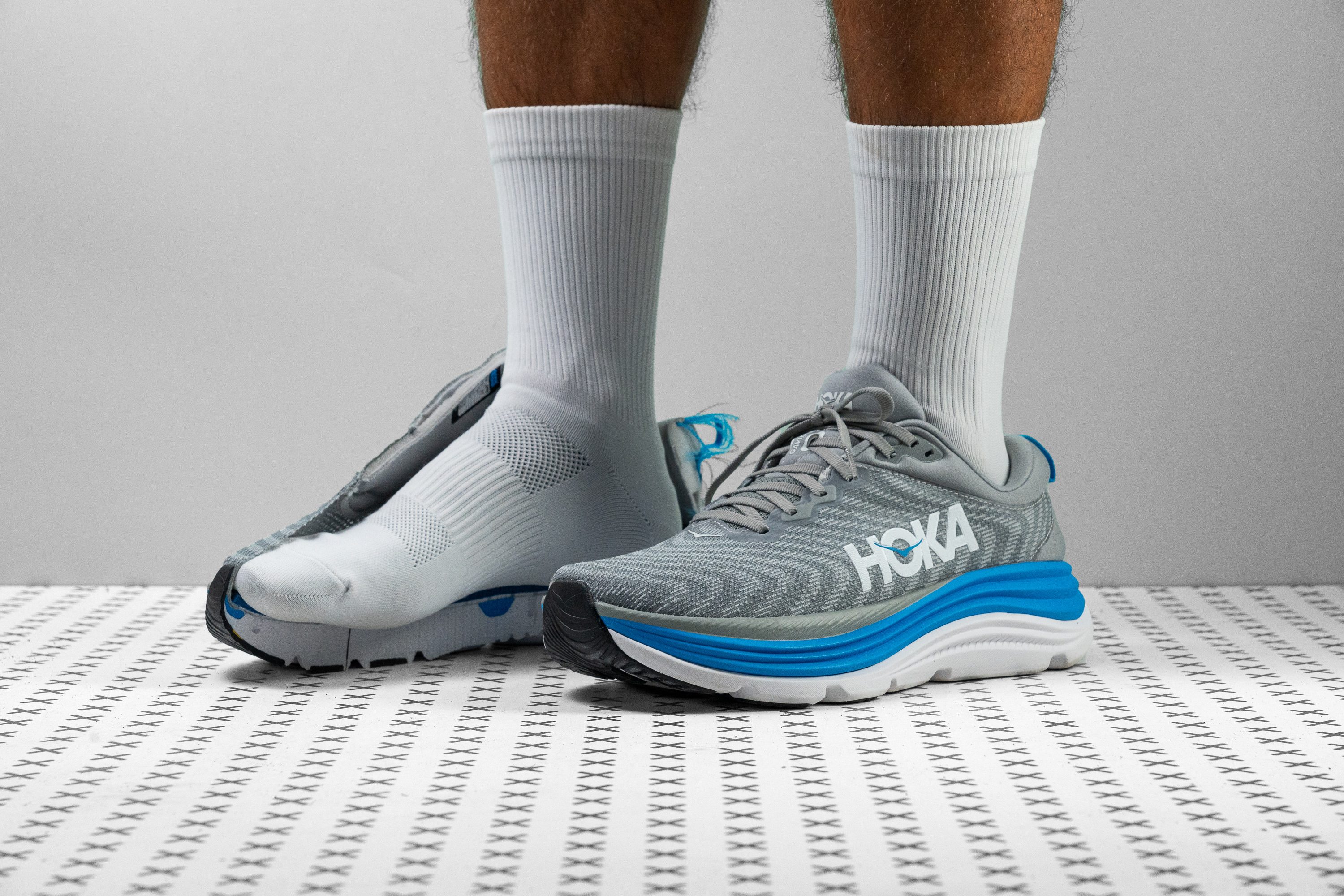Our verdict
- Top pick in best running shoes for flat feet
- Top pick in best Hoka running shoes
Pros
- Remarkably stable
- Breathable and comfortable upper
- Lightweight for its size
- Good stability option for forefoot strikers
- Ideal for wide feet
- Excellent for long runs
Cons
- Low drop might pose issues for heel strikers
- Performs poorly in colder conditions
- Not for narrow feet
- Midsole feels flat
Audience verdict
- Top 6% most popular running shoes
Comparison
The most similar running shoes compared
+ + Add a shoe | |||||
|---|---|---|---|---|---|
| Audience score | 83 Good! | 91 Superb! | 83 Good! | 89 Great! | |
| Price | $175 | $145 | $170 | $140 | |
| Pace | Daily running | Daily running | Daily running | Daily running | |
| Shock absorption | Moderate | - | Low | Moderate | |
| Energy return | Low | - | Low | High | |
| Traction | High | - | Moderate | Moderate | |
| Arch support | Stability | Stability | Stability | Stability | |
| Weight lab Weight brand | 10.5 oz / 299g 10.9 oz / 310g | 9.2 oz / 261g 9.6 oz / 272g | 11.6 oz / 329g 11.3 oz / 320g | 9.8 oz / 279g 9.8 oz / 278g | |
| Drop lab Drop brand | 2.2 mm 6.0 mm | 4.0 mm 4.0 mm | 7.9 mm 10.0 mm | 10.0 mm 10.0 mm | |
| Strike pattern | Mid/forefoot | Mid/forefoot | Mid/forefoot | HeelMid/forefoot | |
| Size | True to size | Slightly small | True to size | True to size | |
| Midsole softness | Soft | Balanced | Balanced | Balanced | |
| Difference in midsole softness in cold | Big | Big | Normal | Small | |
| Toebox durability | Decent | Decent | Good | Decent | |
| Heel padding durability | Bad | Decent | Good | Bad | |
| Outsole durability | Good | Decent | Good | Decent | |
| Breathability | Breathable | Moderate | Moderate | Moderate | |
| Width / fit | Wide | Medium | Narrow | Medium | |
| Toebox width | Wide | Wide | Medium | Wide | |
| Stiffness | Stiff | Stiff | Moderate | Flexible | |
| Torsional rigidity | Stiff | Moderate | Stiff | Moderate | |
| Heel counter stiffness | Moderate | Moderate | Moderate | Stiff | |
| Heel lab Heel brand | 34.9 mm 36.0 mm | 29.9 mm 30.0 mm | 33.2 mm 31.0 mm | 33.1 mm 36.0 mm | |
| Forefoot lab Forefoot brand | 32.7 mm 30.0 mm | 25.9 mm 26.0 mm | 25.3 mm 21.0 mm | 23.1 mm 26.0 mm | |
| Widths available | NormalWide | Normal | Normal | Normal | |
| Orthotic friendly | ✓ | ✓ | ✓ | ✓ | |
| Season | SummerAll seasons | All seasons | All seasons | All seasons | |
| Removable insole | ✓ | ✓ | ✓ | ✓ | |
| Ranking | #260 Bottom 30% | #26 Top 7% | #252 Bottom 32% | #111 Top 30% | |
| Popularity | #19 Top 6% | #230 Bottom 38% | #159 Top 43% | #259 Bottom 30% |
Who should buy
We think the Hoka Gaviota 5 is an excellent choice for:
- Runners needing a stability shoe for wider feet.
- Those who are looking for a comfortable-yet-stable shoe with nice arch support.
- Hoka fans wanting a cushioned, low-drop, long-distance shoe in their collection.
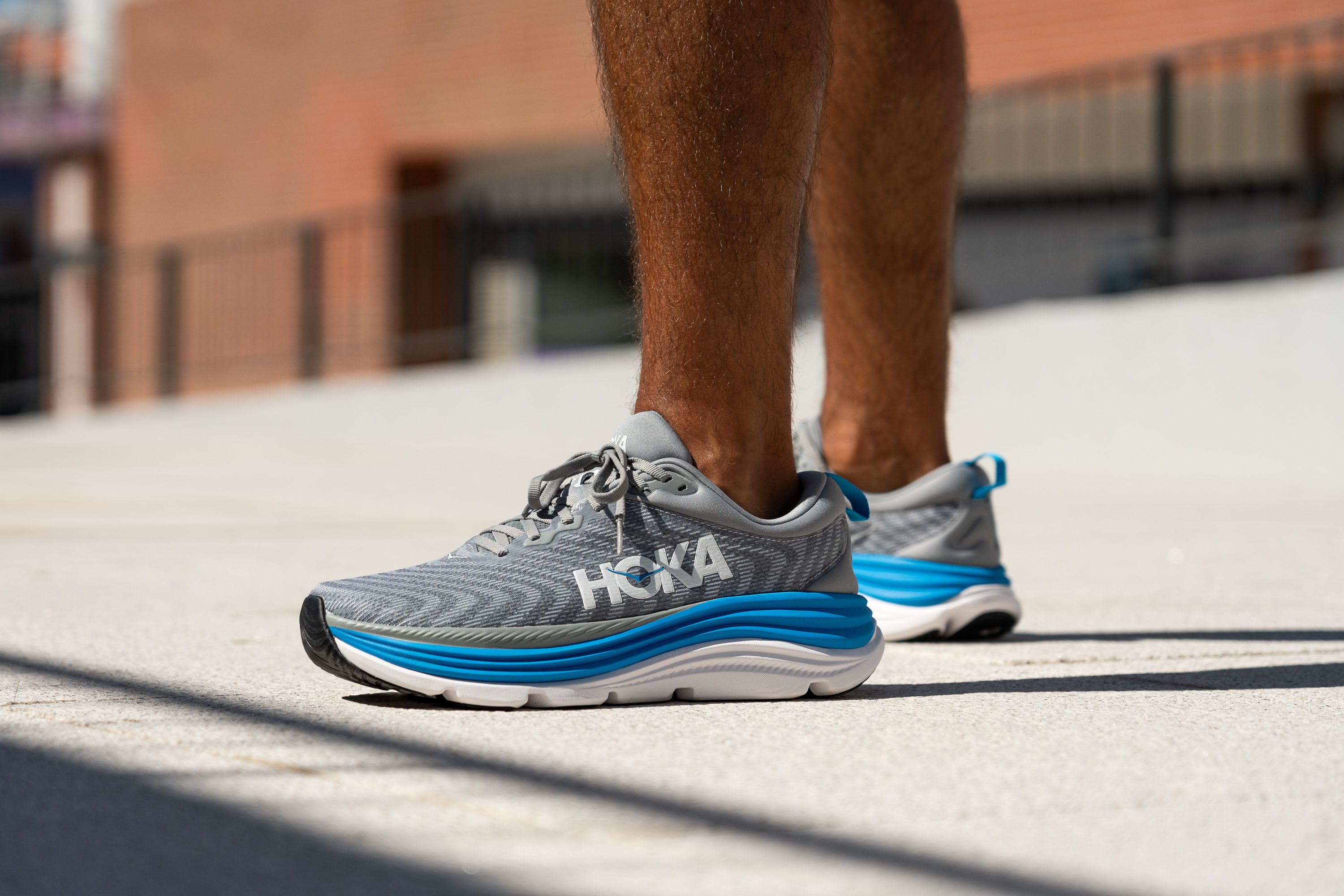
Who should NOT buy
For many runners, the major drawback of the impressive Hoka Gaviota 5 is its notably low drop (2.2 mm). We think that if you're a runner who isn't keen on or simply can't use very low drop shoes, this isn't the best pick for you. Instead, consider the ASICS Kayano 30 for a high-drop option that still offers plush cushioning and stability.
If you favor a firmer and more natural feel for your runs, we believe the Saucony Tempus is a strong and cheaper contender. For a Hoka alternative, the Gaviota 4, the previous iteration, is well-regarded for that—if you don't mind the extra weight.
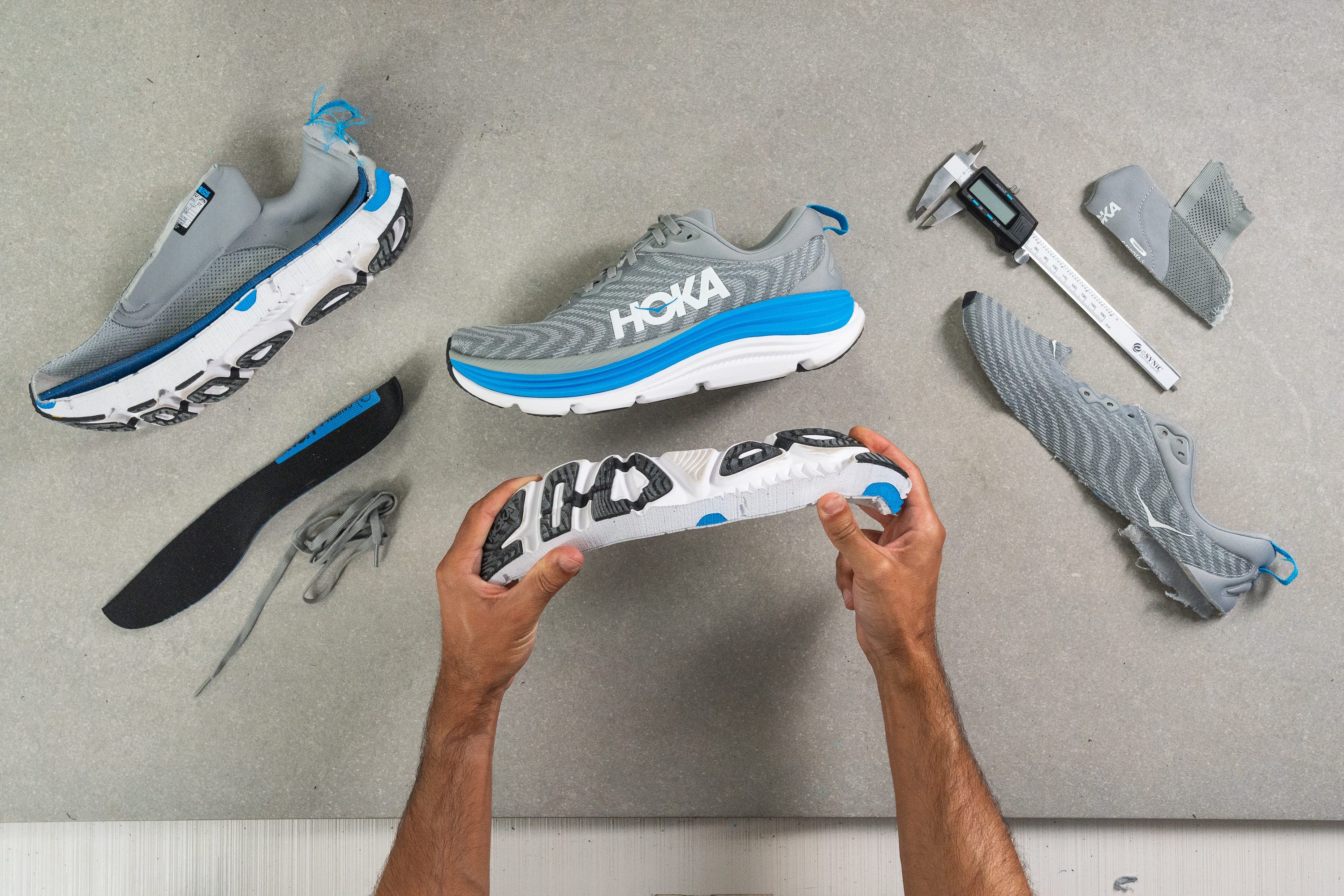
Cushioning
Shock absorption
The Gaviota 5 features a midsole design that can be a little misleading. Its stability-focused sidewalls might suggest extra heel cushioning, but that’s not what we found. We measured just 116 SA in the heel and 113 SA in the forefoot.
Both scores fall well below what the shoe’s maximalist look implies, and that’s exactly where lab testing proves most valuable.

| Hoka Gaviota 5 | 116 SA |
| Average | 129 SA |
Energy return
Energy return is also quite low at just 48.9%. That makes the Gaviota a better match for slow runs or casual outings where speed isn’t the goal—and you’ll have to let go of any expectations for a bouncy feel underfoot.
| Hoka Gaviota 5 | 48.9% |
| Average | 58.5% |
Heel stack
At our lab, we measured the heel of the Gaviota 5 using a caliper. We discovered that it has 34.9 mm of stack height.
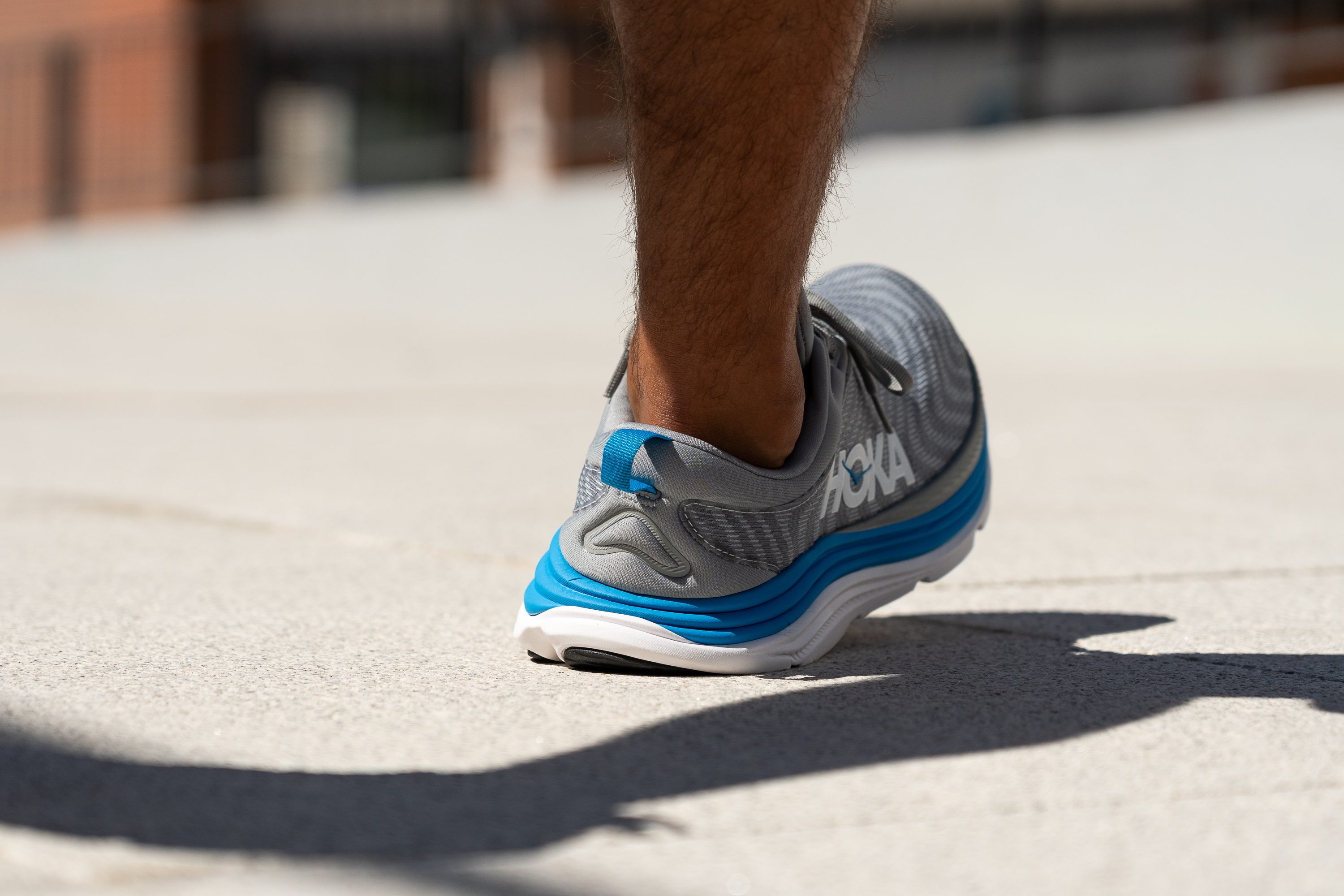
Based on this, we believe any heel striker, regardless of their weight, will find the cushioning in the Gaviota 5 more than adequate.
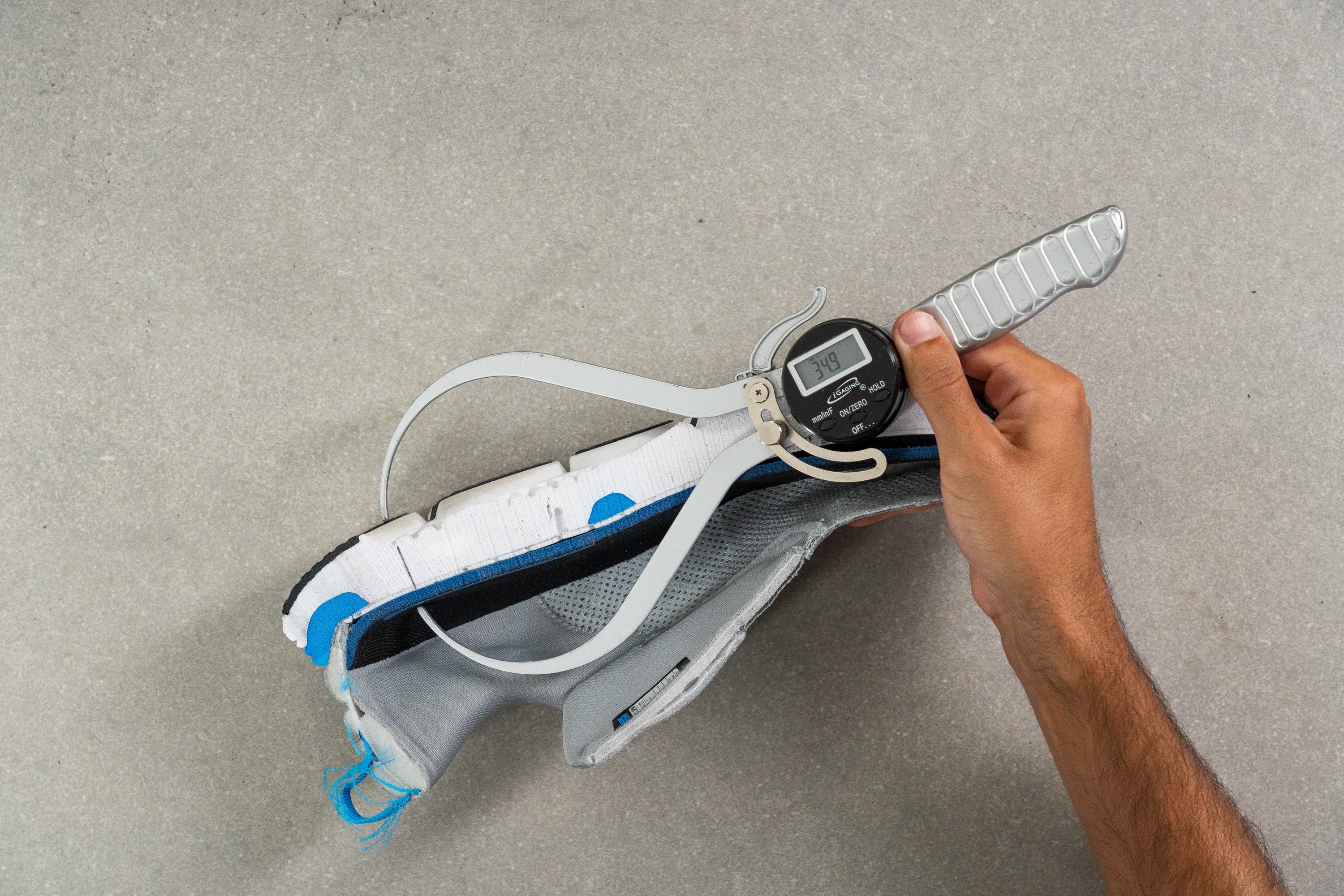
| Hoka Gaviota 5 | 34.9 mm |
| Average | 34.8 mm |
Forefoot stack
The Gaviota 5 really stands out in the forefoot area compared to most stability shoes on the market. Many of these shoes target heel strikers and often lack foam in the forefoot. However, we found that the Gaviota 5 is different.
We measured a thickness of 32.7 mm in its forefoot area, which is mind-blowing.

| Hoka Gaviota 5 | 32.7 mm |
| Average | 26.2 mm |
Drop
The heel-to-toe drop is really low. We measured it carefully in our lab and found a difference of just 2.2 mm. This makes the Gaviota 5 almost like an Altra shoe in terms of its low drop.
What does this design mean? Well, if you are prone to calf or Achilles tendon issues, this shoe might not be the best fit for you.
It's also not ideal for extreme heel strikers who usually prefer shoes with a higher drop. However, we think it's one of the best stability shoes ever made for forefoot strikers.
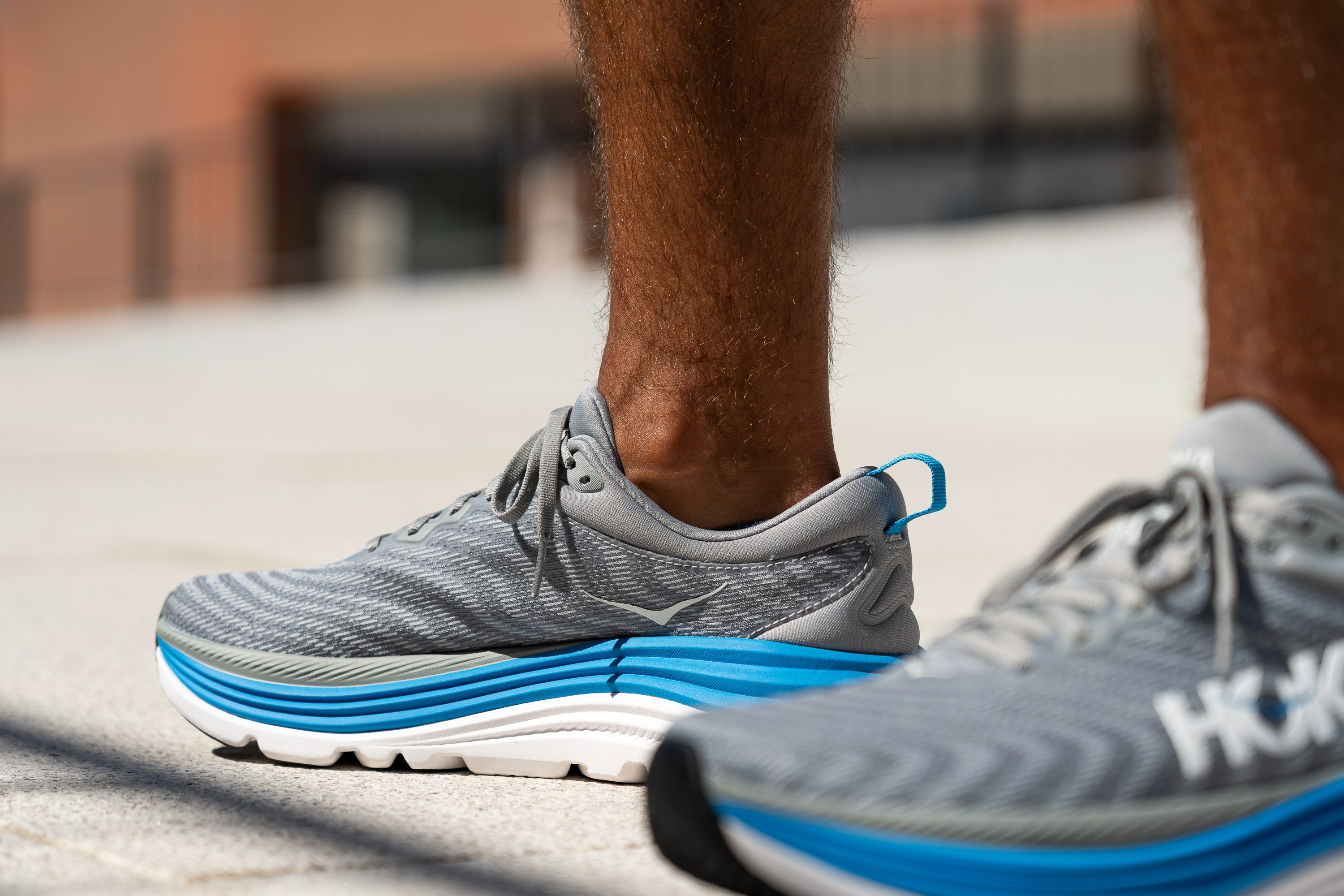
| Hoka Gaviota 5 | 2.2 mm |
| Average | 8.6 mm |
Midsole softness
While the Gaviota 4 is a decent shoe, we found it probably too firm. Given our experience with brands over the years, we anticipated they would introduce a softer version in their next update. But the extent of the change surprised us.
We measured the foam of the Gaviota 5 in our lab and found it to be at 12.9 HA, which is 120% softer when compared to v4.
This remarkably low number makes it one of the softest shoes we've ever tested. And it means the signature cloud-like cushioning of Hoka shoes is back.

| Hoka Gaviota 5 | 12.9 HA |
| Average | 20.4 HA |
Secondary foam softness
Soft foam is a challenge for a stability-focused shoe. Hoka addressed this potential issue in several innovative ways, which we'll delve into throughout this review. Their first go-to solution? Integrating a firmer, secondary foam (blue) into the arch, heel, and tip areas.
This choice ensures that even with the ultra-soft main foam, the slightly harder secondary foam—measuring at 22.0 HA—provides balance without sacrificing that plush sensation.

| Hoka Gaviota 5 | 22.0 HA |
| Average | 22.7 HA |
Size and fit
Size
Hoka Gaviota 5 fits true to size (507 votes).
Width / Fit
To understand the fit, we crafted a gel mold of the Gaviota 5's interiors using our custom formula.
Unlike many Hoka models, the Gaviota 5 boasts an ultra-roomy toebox at 99.7 mm—perfect for wide-footed runners. Even better, a wide sizing option is available for this model!
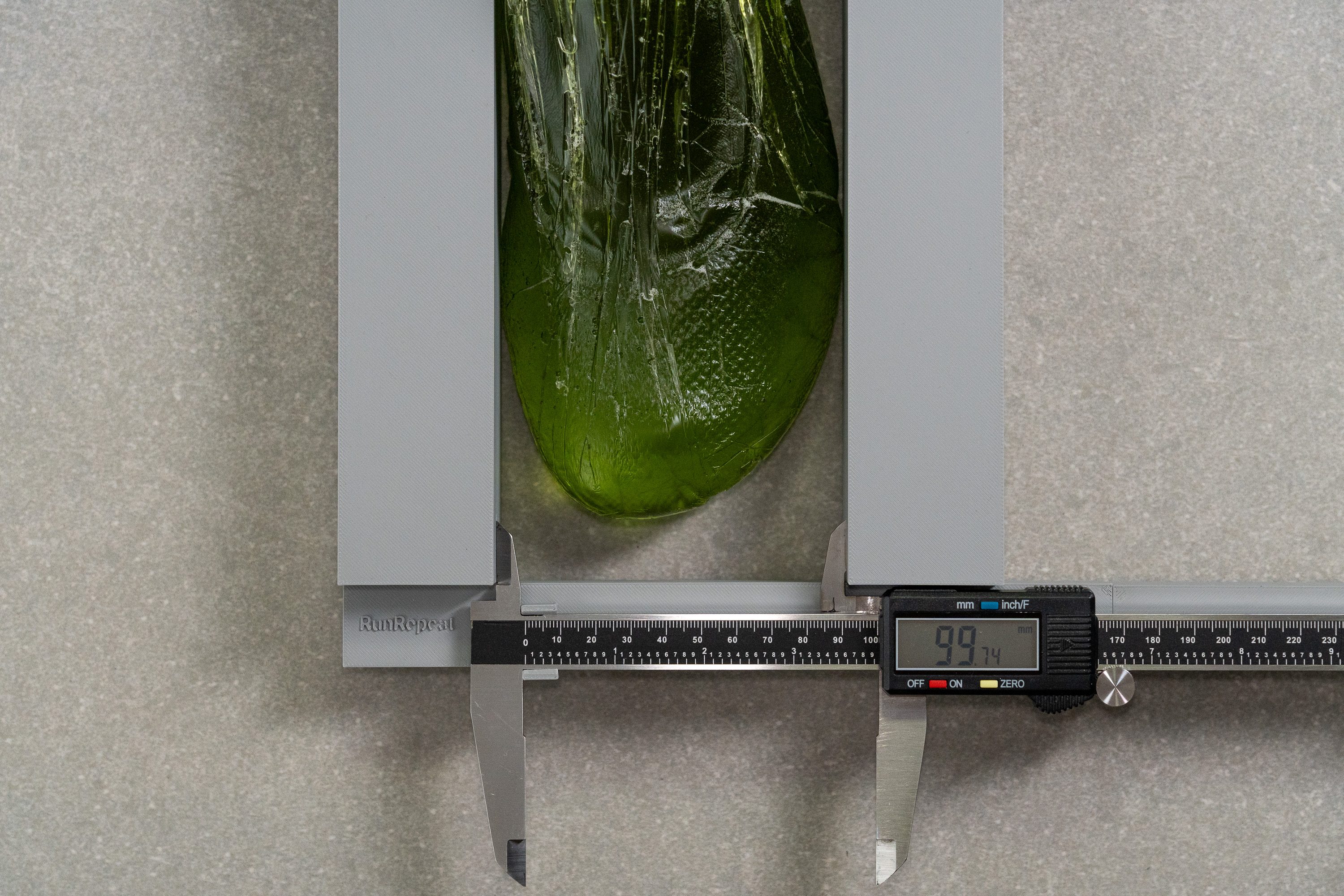
| Hoka Gaviota 5 | 99.7 mm |
| Average | 95.1 mm |
Toebox width
The strong taper seen in most Hoka daily trainers? Completely gone! Instead, Gaviota 5 features a rounded toe cap that promotes superior toe splay. After testing, we measured the big toe area at a spacious 77.2 mm.
This measurement is significantly broader than most running shoes. From our perspective, if you have a Roman foot—where the first four toes are evenly aligned—you’ll appreciate this extra room for enhanced comfort.
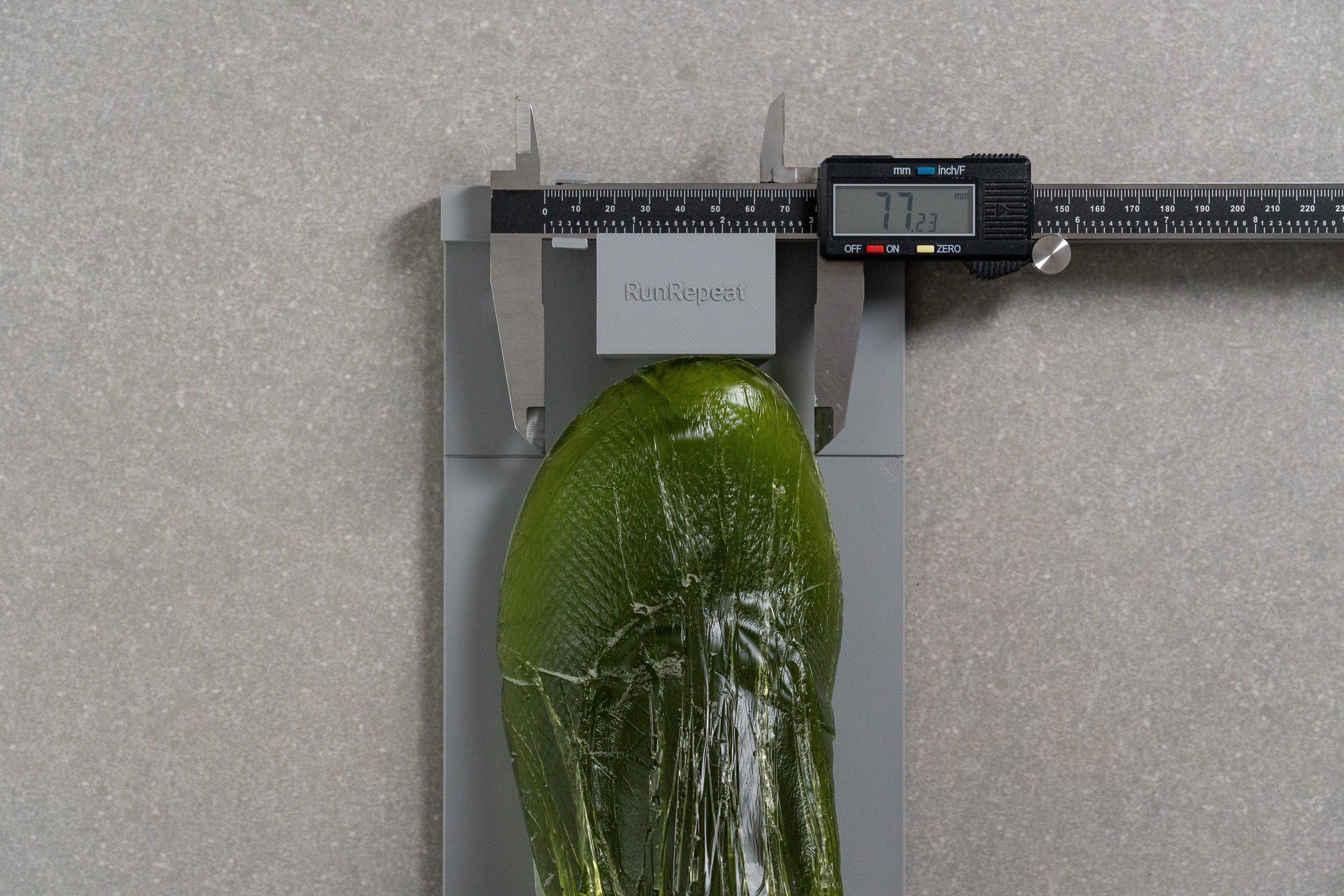
| Hoka Gaviota 5 | 77.2 mm |
| Average | 73.2 mm |
Toebox height
While the Clifton and Bondi series emphasize a narrower width and more generous height, the Gaviota takes a different approach. We found its height to be slightly limited at 26.8 mm, though still close to the average.

| Hoka Gaviota 5 | 26.8 mm |
| Average | 27.1 mm |
Traction / Grip
Traction test
The Hoka Gaviota 5 turned in a solid grip performance in our wet concrete test, landing a 0.46 score. That’s a dependable result for this category that ensures good grip under the rain, though not groundbreaking.
From our runs, dry grip feels even more sure-footed. For a stability shoe, this gives enough traction to feel confident on both smooth and rough roads.
| Hoka Gaviota 5 | 0.46 |
| Average | 0.48 |
Outsole design
To cut down on weight, we discovered that Hoka designed the Gaviota's fifth version with more exposed foam and minimal rubber in the outsole. And we know that this could be concerning for some runners.

Flexibility / Stiffness
During our 30-degree bend test in the lab, we had to apply 21.3N of force with our machine to bend the shoe to the desired point.
While this isn't an extremely high force, for a training shoe without a plate, it's notably stiff.
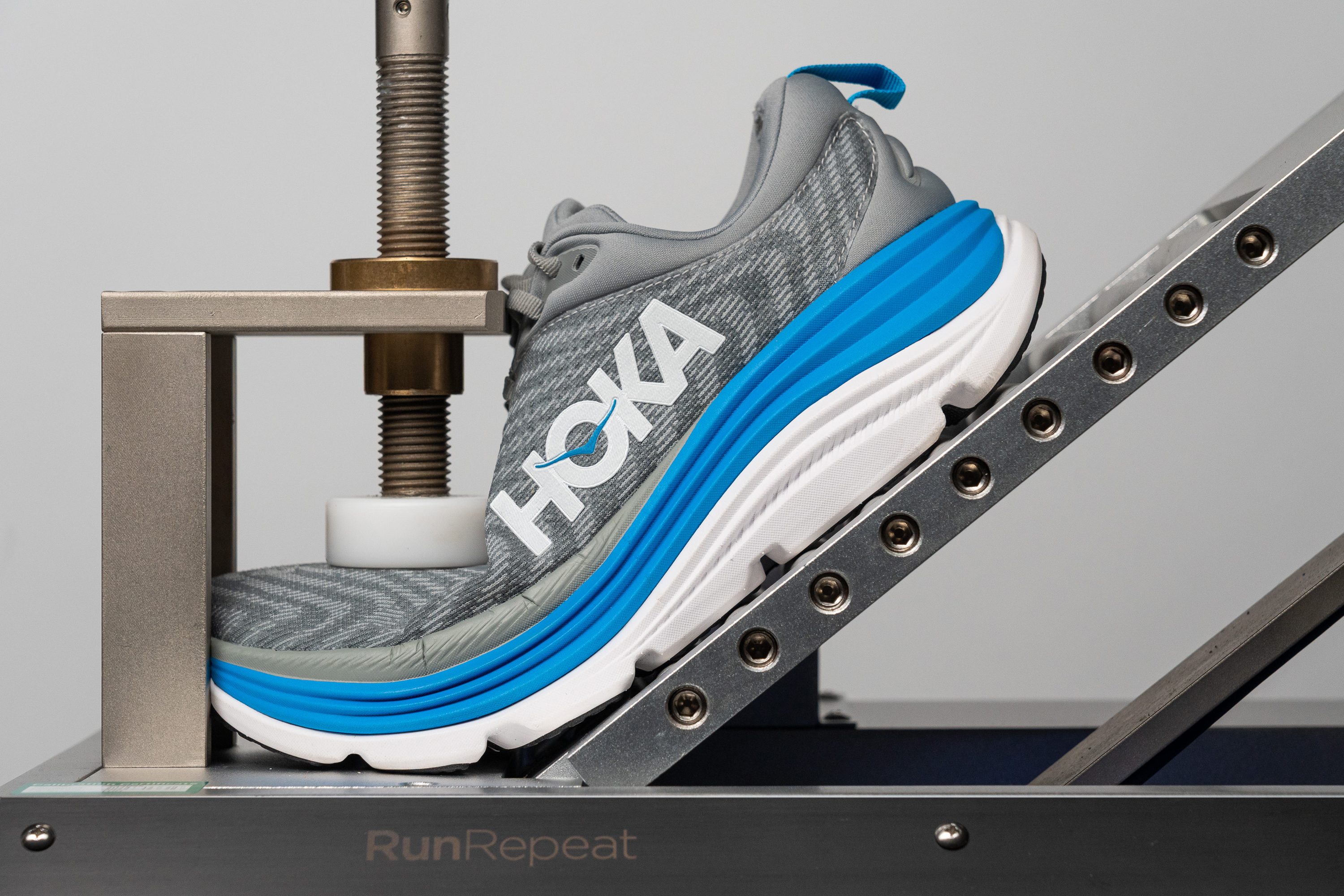
| Hoka Gaviota 5 | 21.3N |
| Average | 15.3N |
Weight
When we placed the Gaviota 5 on our scale, we were really surprised. Weighing in at 10.5 oz or 299g for a US size 9, we found that this shoe is relatively light, especially given the significant amount of foam it contains.
Moreover, it's 25g lighter than its predecessor. What an improvement!
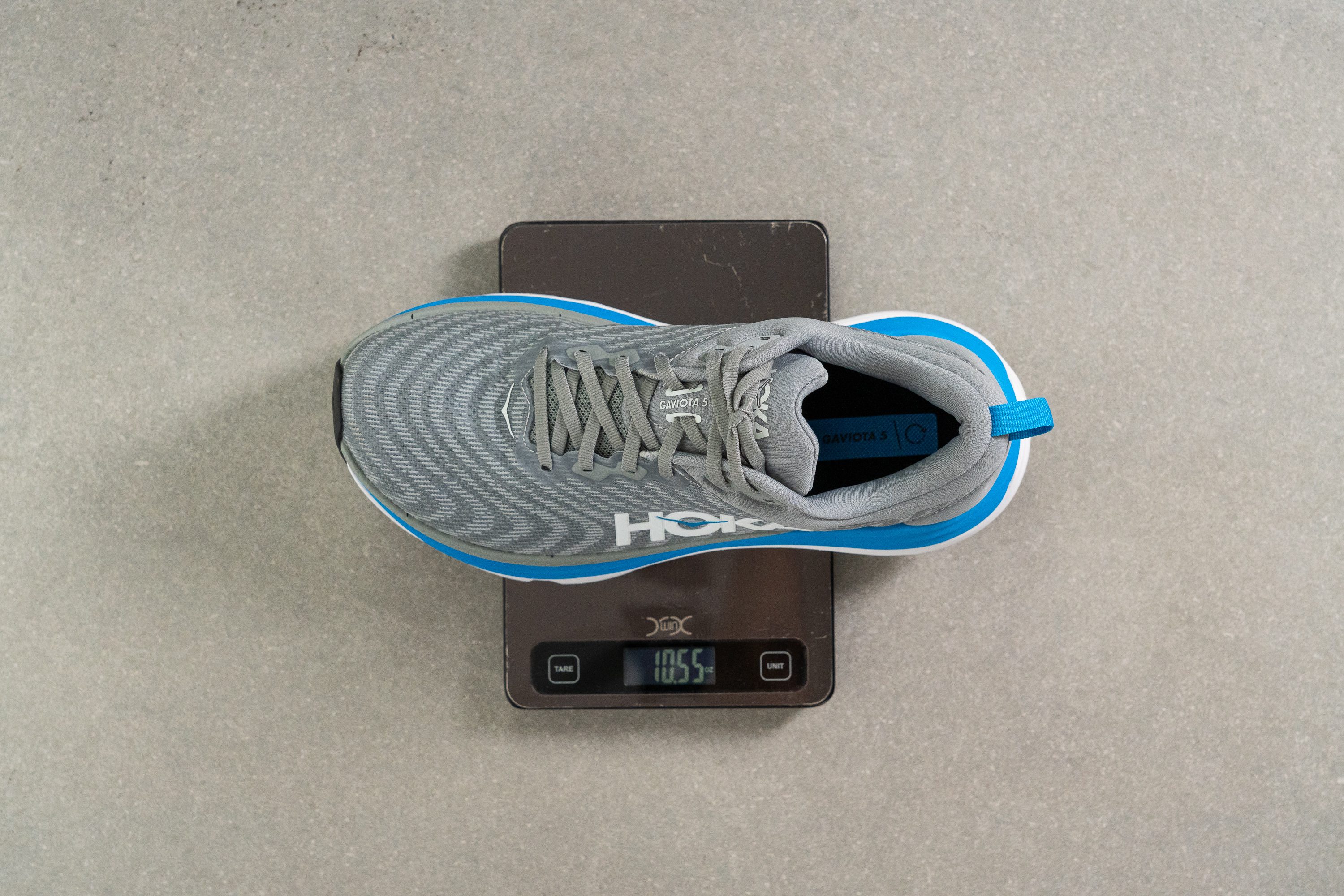
| Hoka Gaviota 5 | 10.5 oz (299g) |
| Average | 9.3 oz (264g) |
Breathability
We couldn't wait to get our hands on the Hoka Gaviota 5. Improving an already fantastic shoe like the Gaviota 4 is no easy feat for any brand. Yet, there was one area ready for improvement—breathability.
In our lab, we put the shoe to the test with our cutting-edge smoke-pumping machine to gauge airflow. The results? Bravo! This Hoka nailed it with a perfect score—a 5 out of 5.
Holding the shoe up to the light, we were thrilled to see it with lots of ventilation holes. And not just in the usual spots like the toebox.
Surprisingly, even the medial part boasts these holes—a game-changer for those of us prone to hotspots or blisters in our arches.

Looking through the microscope, we spotted an impressively thin engineered mesh, generously packed with hundreds of ventilation holes.

And here's another reason for this fantastic performance: the inside of the upper. While most brands go cheap and use plain fabric that doesn't breathe at all, Hoka did better by using a fabric with ventilation holes.
| Hoka Gaviota 5 | 5 |
| Average | 3.7 |
Stability
Lateral stability test
Given its stability-oriented geometry and the new Hoka H-Frame, we anticipated the Gaviota 5 would shine in this test. And, sure enough, it does!
Torsional rigidity
When we twisted the shoe, it felt stiff—just as a stability shoe should, to prevent lateral movement. We gave it a 4/5 rating.
| Hoka Gaviota 5 | 4 |
| Average | 3.5 |
Heel counter stiffness
In the heel, we discovered it wasn't as stiff as we anticipated. Considering the shoe already feels quite stable, we believe this is a good decision because flexibility in the heel enhances comfort.
We noted a 3/5 rating that aligns more with a daily running shoe.
| Hoka Gaviota 5 | 3 |
| Average | 2.9 |
Midsole width - forefoot
The secret sauce in the Gaviota 5's recipe for stability is its incredibly wide design. With a forefoot width of 125.1 mm, it broke all our lab records. It's M-A-S-S-I-V-E.
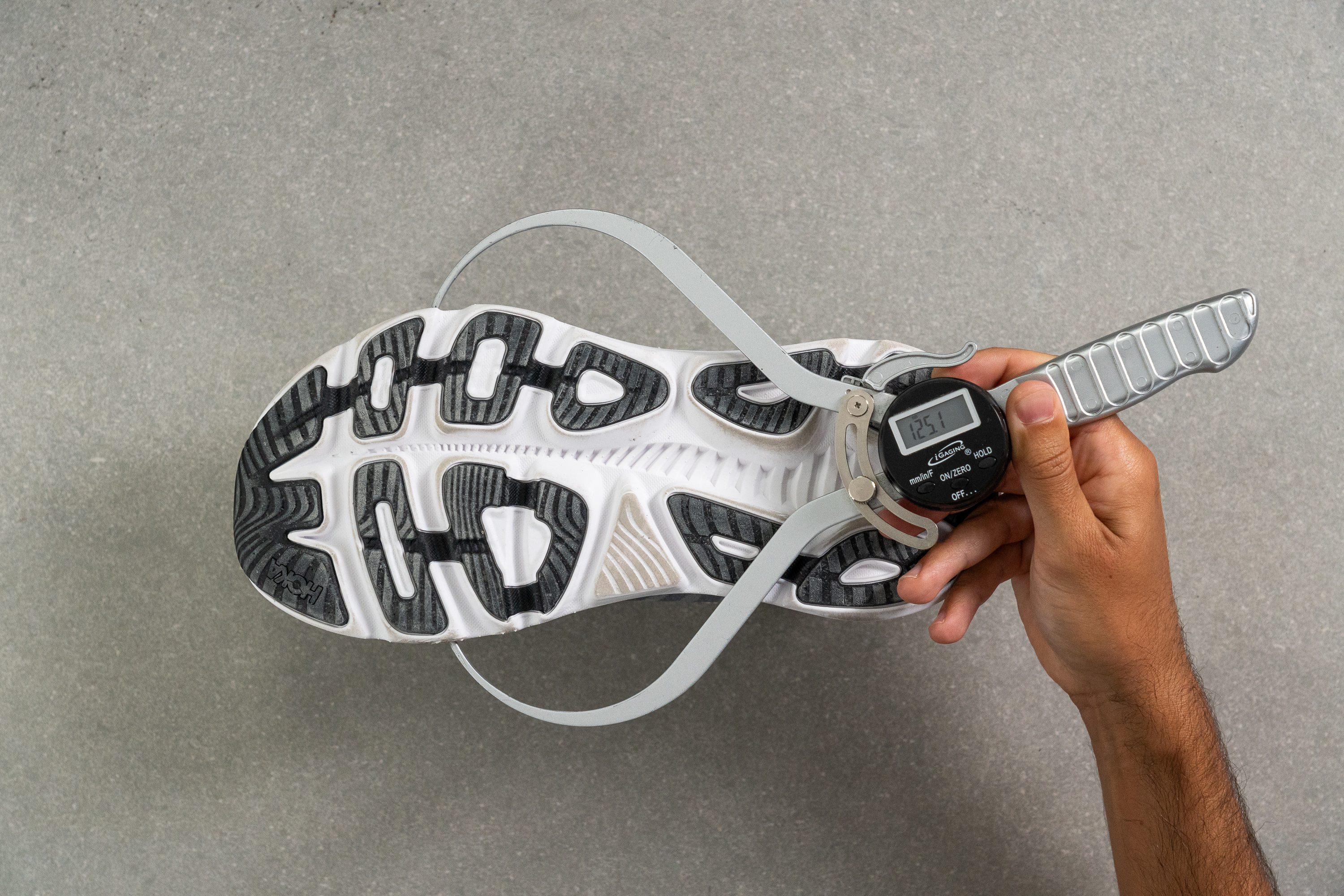
| Hoka Gaviota 5 | 125.1 mm |
| Average | 114.4 mm |
Midsole width - heel
The heel continues on this wide trend. We measured it at 106.6 mm, which, when compared to the average, stands out immensely.
This broad base allows the shoe to maintain stability while still offering comfort and a plush feel.

| Hoka Gaviota 5 | 106.6 mm |
| Average | 90.7 mm |
Durability
Toebox durability
After checking out how well the Gaviota 5 breathes, we headed to another part of the lab to see how durable it is. Durability tests can be tough for ventilated uppers.
As we suspected, when we used the Dremel on the upper at 5K RPM, it did get some damage. But with a score of 2/5, this shoe held up better than many others we've tested!

| Hoka Gaviota 5 | 2 |
| Average | 2.6 |
Heel padding durability
The heel didn't hold up as well as the toebox. It's clear Hoka went for a softer material in the heel, aiming for comfort.
But in doing so, they sacrificed durability. We were disappointed and had to rate it a low 1/5 for this test.
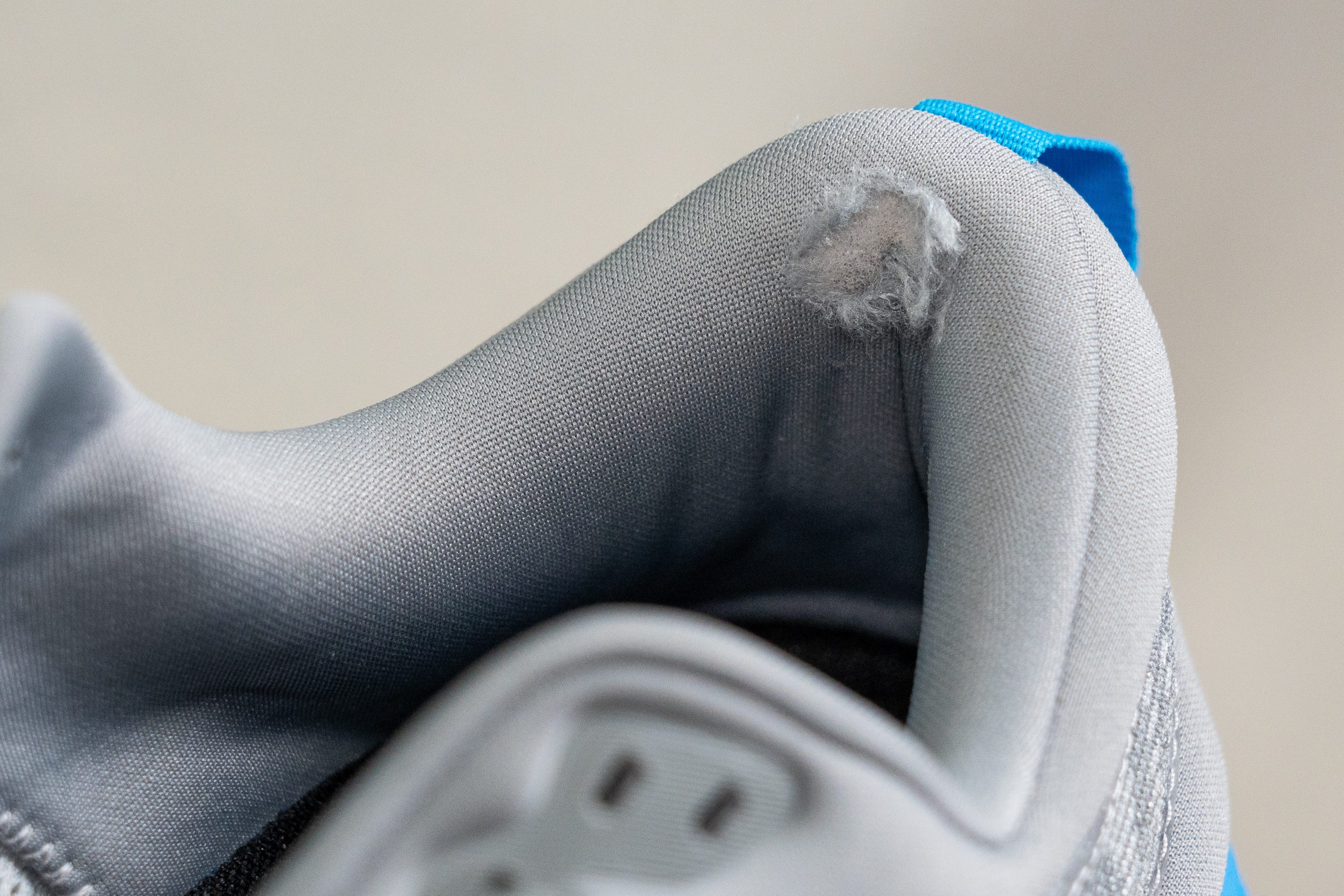
| Hoka Gaviota 5 | 1 |
| Average | 3.4 |
Outsole durability
However, sometimes the durometer score doesn't reflect real-world toughness.
Because we're always keen to test shoes rigorously, we used the Dremel in the lab once more to see how much rubber wore away after 20 seconds.
We measured a wear of 0.9 mm, which is okay. This leads us to believe the outsole will hold up well, though it's not particularly extraordinary.
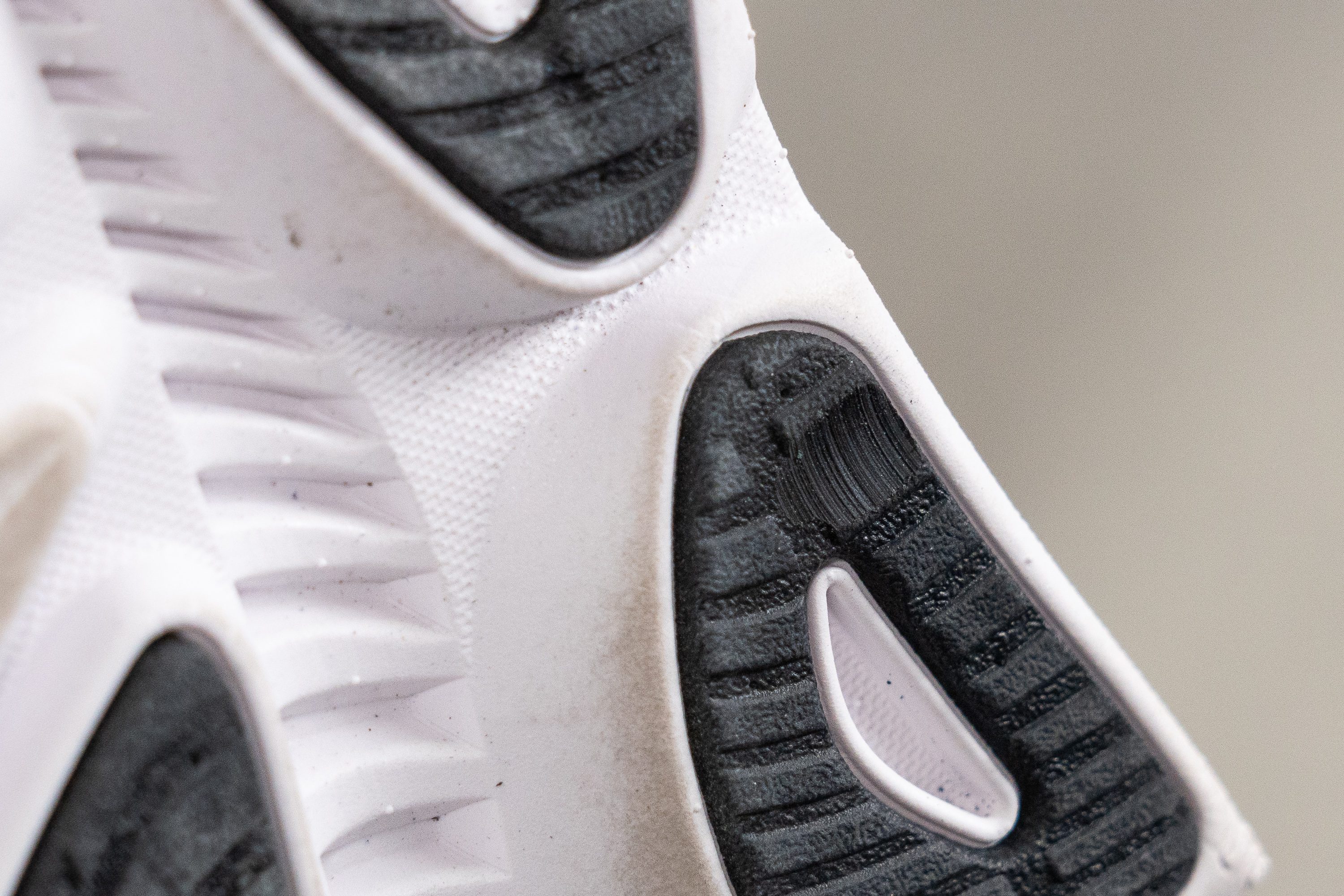
| Hoka Gaviota 5 | 0.9 mm |
| Average | 1.1 mm |
Outsole thickness
With a thickness of 3.8 mm, Hoka smartly exceeded the average to extend the shoe's life.
However, we feel adding even more rubber would be interesting. Thanks to its minimal coverage, increasing the thickness beyond 4 millimeters wouldn't result in a noticeable weight gain for this shoe.

| Hoka Gaviota 5 | 3.8 mm |
| Average | 3.2 mm |
Misc
Insole thickness
The Gaviota line is all about comfort, and the insole plays a huge role here. We've measured it, and at 5.0 mm, it's just what we wanted.

| Hoka Gaviota 5 | 5.0 mm |
| Average | 4.5 mm |
Removable insole
We were able to take out the insole and pop in our own orthotics. Super easy and no hassle!
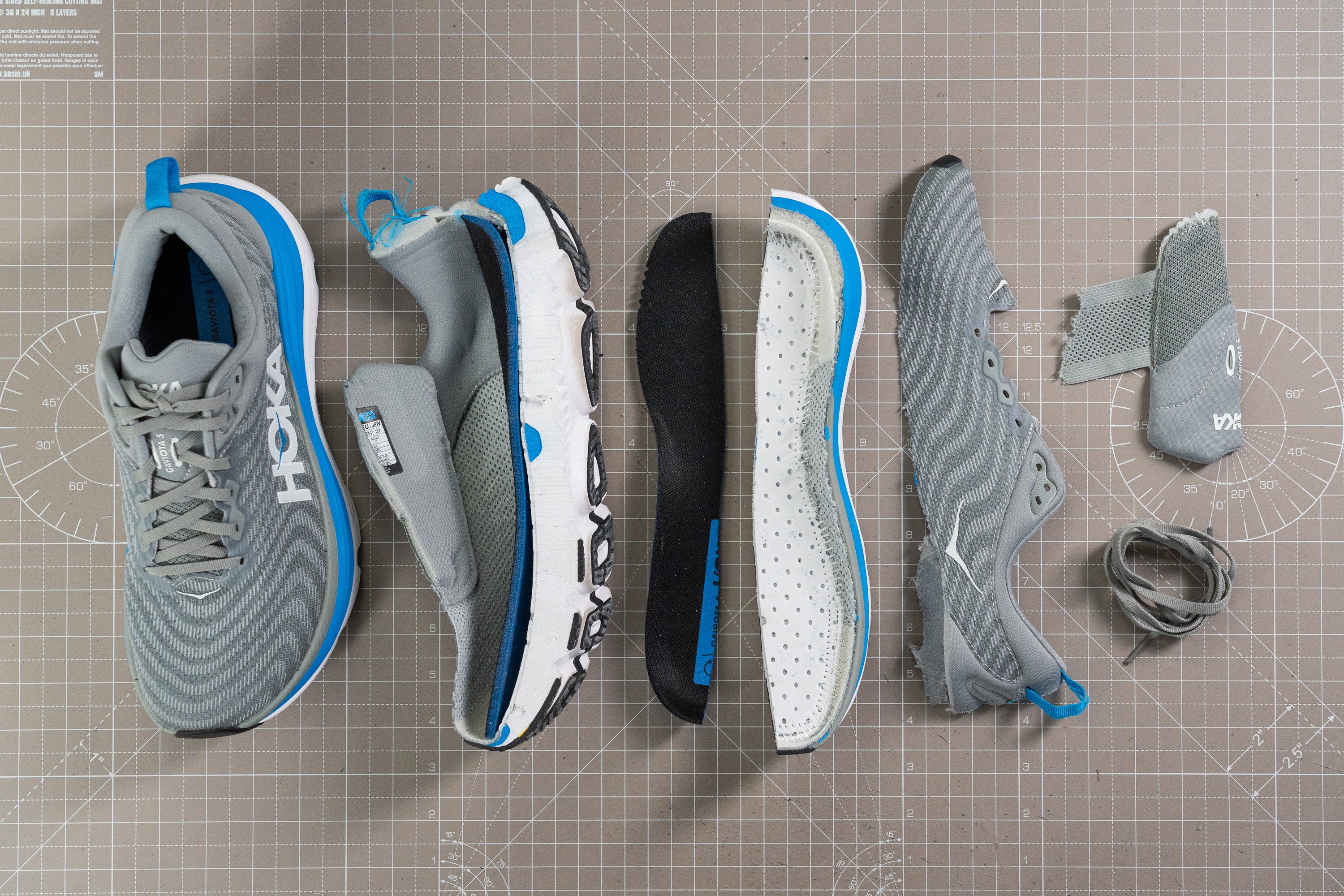
| Hoka Gaviota 5 | Yes |
Midsole softness in cold (%)
The shoe's main foam doesn't fare well in cold conditions. It turns disappointingly firm.
After subjecting the shoe to a cold 20-minute stay in the freezer, we tested it again, and the reading was a discouraging 22.8 HA.
This significant 76.6% increase drastically alters the shoe's feel in colder conditions—a major shortcoming for a shoe premium-priced at $175.
So, what's the reason behind this? The issue stems from the Gaviota 5's midsole, which uses EVA foam known to underdeliver in chilly temperatures. Considering Hoka has started integrating Pebax into some of their other models like the Mach X, we're hopeful to see this upgrade in the Gaviota 6 to address this flaw.

| Hoka Gaviota 5 | 77% |
| Average | 24% |
Reflective elements
We're all about the tiny details, and here's a perfect example! Hoka added these shiny reflective parts on the back that look like seagulls.
And just so you know, "gaviota" is how you say "seagull" in Spanish!

| Hoka Gaviota 5 | Yes |
Tongue padding
The tongue thickness measures in at 8.6 mm, so it's super padded.
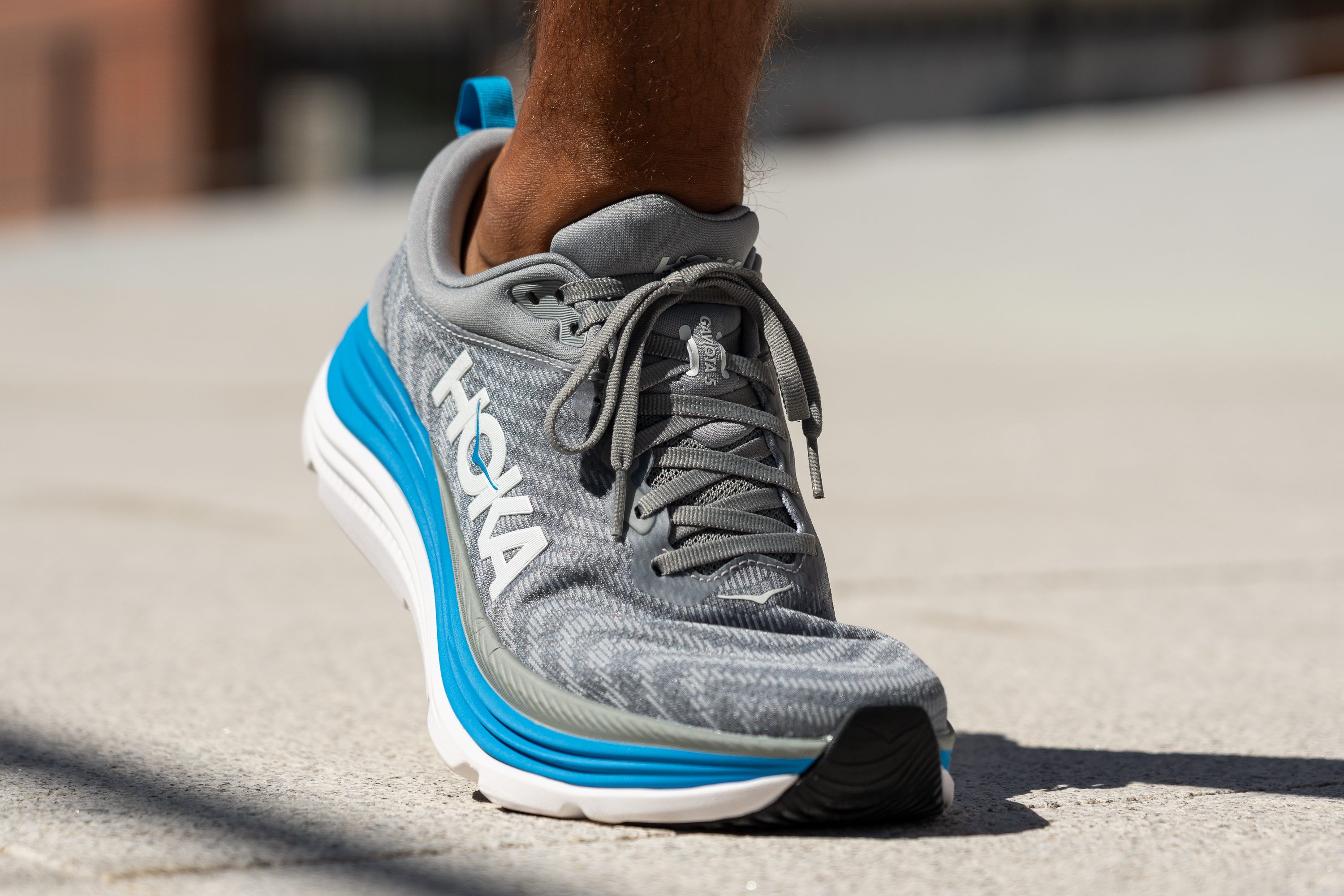
We discovered that this padding helps protect the instep from issues like lace bite. Still, we think Hoka should shave off 1-2 mm in the next version to make the shoe even lighter.
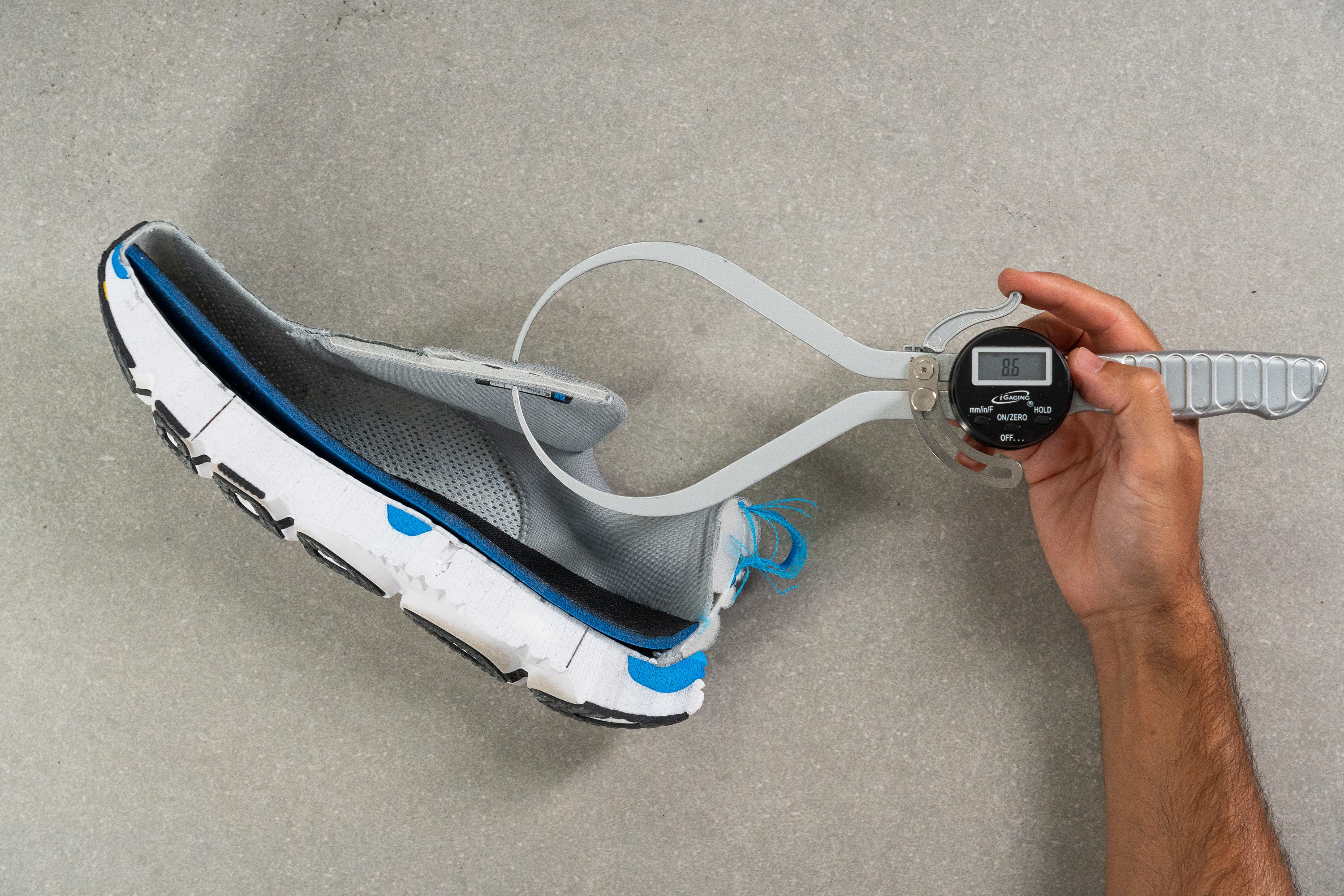
| Hoka Gaviota 5 | 8.6 mm |
| Average | 5.8 mm |
Tongue: gusset type
Hoka rocks a unique one-side semi-gusseted tongue—a feature not many brands sport.
In all our test-runs, we felt that it gives a top-notch lockdown without piling on extra weight.
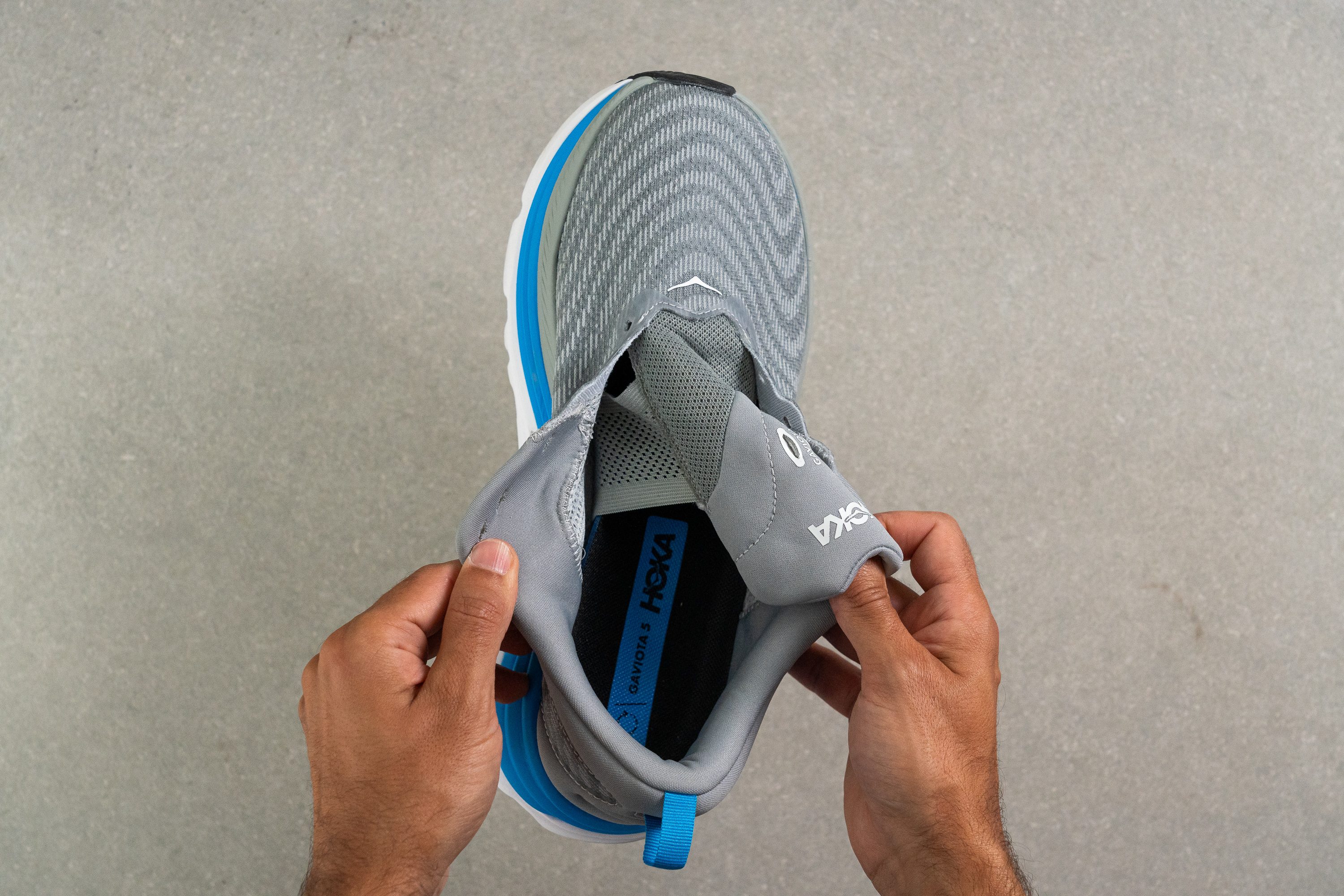
| Hoka Gaviota 5 | One side (semi) |
Heel tab
On the back of the shoe, Hoka put in a finger-loop heel tab. We found that it doesn't just give the shoe a cool look—it also makes getting our feet in way easier!
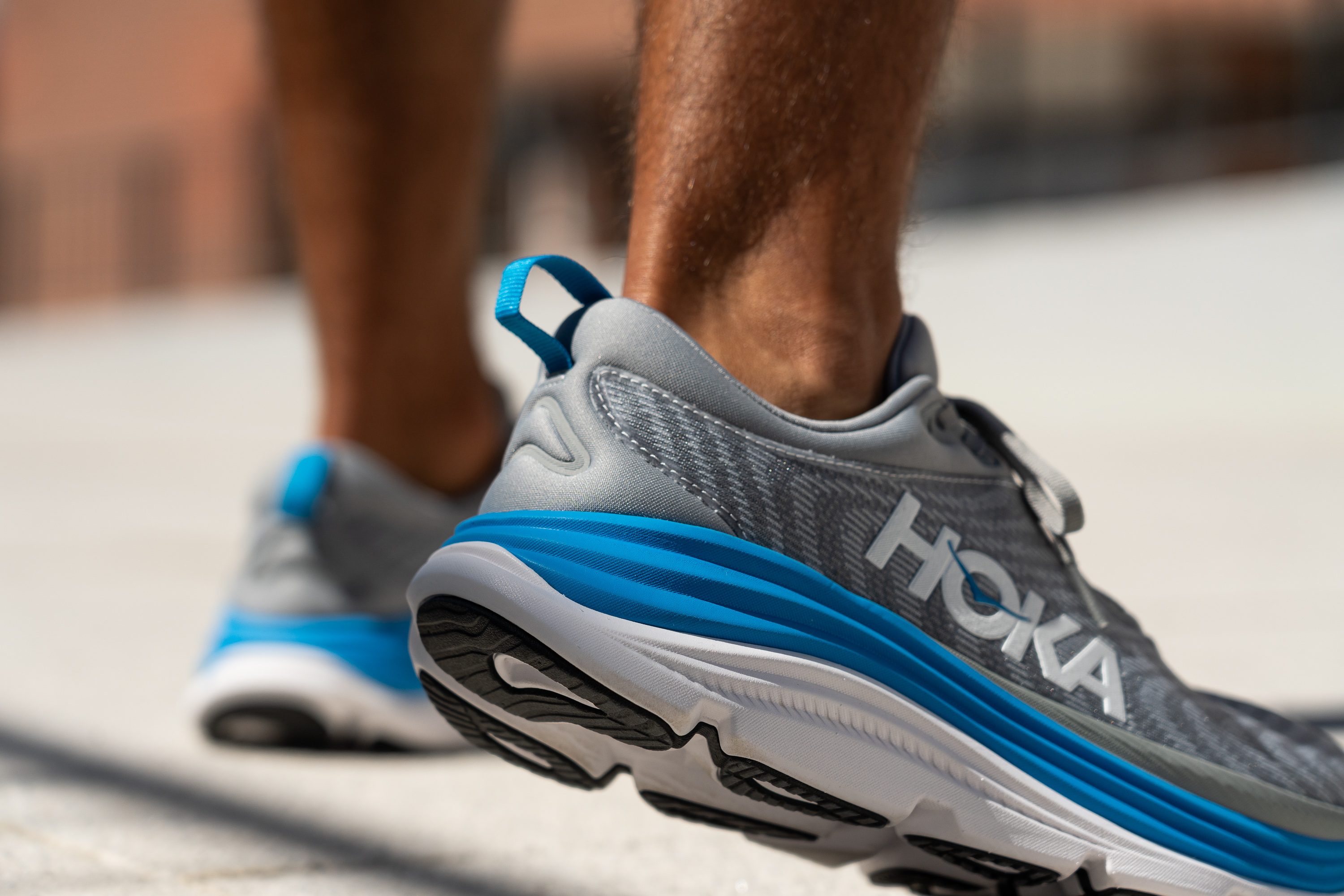
| Hoka Gaviota 5 | Finger loop |

